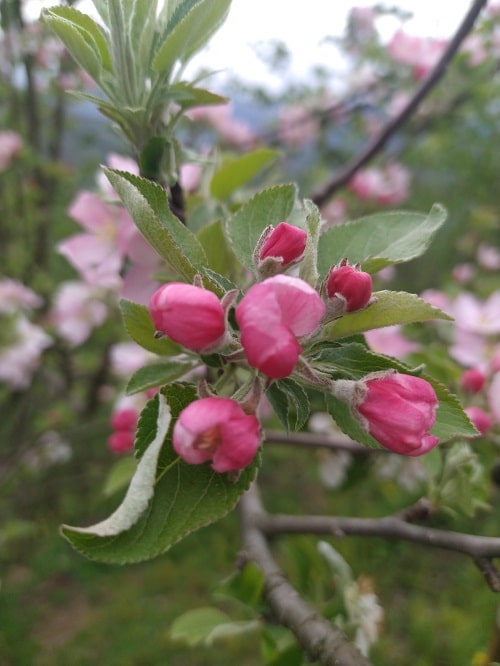Why do fruit trees bloom?
The first condition for fruit trees to produce a crop is the formation of flower buds on them. Accordingly, fruit growers must, first and foremost, ensure that there are enough flower buds on the trees. It is imperative that they take the necessary precautions for the formation of buds. How and when flower buds are formed on fruit trees and how they are affected that the crop can be guaranteed. With the formation of flower buds, the crop is not always guaranteed, i.e. trees may not bear fruit even though the flowers have formed normally. In this case Many physiological, ecological and biological problems are effective. The first condition for its formation is the formation of flower buds.
In places where fall irrigation is not carried out, it is seen that the organs in the buds do not fully form and enter the winter resting period, and in the following spring they cannot complete this deficiency and open as abnormal flowers with short needles.

In spring, three to four weeks after the flowers open, branches and twigs of fruit trees a number of buds appear on it again. The buds that will bloom and shoot the following year are the same buds that developed in the spring of the previous year. the fact that they occur at the end of the period and all summer long. were observed and identified. It is not known when these first impressions were made.
The first date recorded in the literature on the subject is 1656. At that time, Biel had already determined which that the fruiting of the branch can be determined by looking at the external appearance of the buds he said. According to this, even at that time, before the season of the opening of the buds and at the same time, it is known that shoots and fruit eyes are formed separately. and this can even be recognized by the appearance of the buds. was understood.
Research published since then has also shown that flower buds they are said to have formed one year ago. The structure of flower buds and where they are formed varies according to species and cultivars. In the mixed bud form seen in stone fruit species, both the initial development and later during the opening of the flowers. This is due to to know in advance the course of the formation of flower sites in the flower buds and during the opening of flowers in spring, it will provide convenience in terms of both fruit and forecasts on thinning and fruit set, as well as on fruit set. also facilitates planning.
In fruit trees, flower buds begin to form during the development period of the previous year. and the opening of the flowers occurs in the spring development period of the following year. Although the formation of flower organs takes a long time, the buds are formed on shoots or The separation of flower buds occurs within a certain and short period of time. However, this separation period also depends on the species, cultivar and the ecological conditions of the same cultivar in different ecological regions. It also varies according to climatic and soil conditions and cultural conditions.
What are the flower types seen on fruit trees?
If male and female flowers are on the same plant, they are monoecious (hazelnut, walnut, chestnut, mulberry) If male and female flowers are on different plants, they are dioecious (pistachio, fig, persimmon, kiwi) Dioecious Flowers (hermaphrodite, hermaphrodite, hermaphrodite, monoclinic, bisexual): Flowers that have both male and female organs.
When do fruit trees bloom? In fruit trees, flower buds begin to form in the development period of the previous year and the flowers open in the spring development period of the following year.
If we ask which fruit tree does not bloom, the answer is figs.
How does a flower turn into a fruit? Many physiological, ecological and biological problems are involved here, but the first condition for fruit formation is the formation of flower buds. In the spring, three to four weeks after the flowers open, a number of buds reappear on the branches and twigs of fruit trees.





